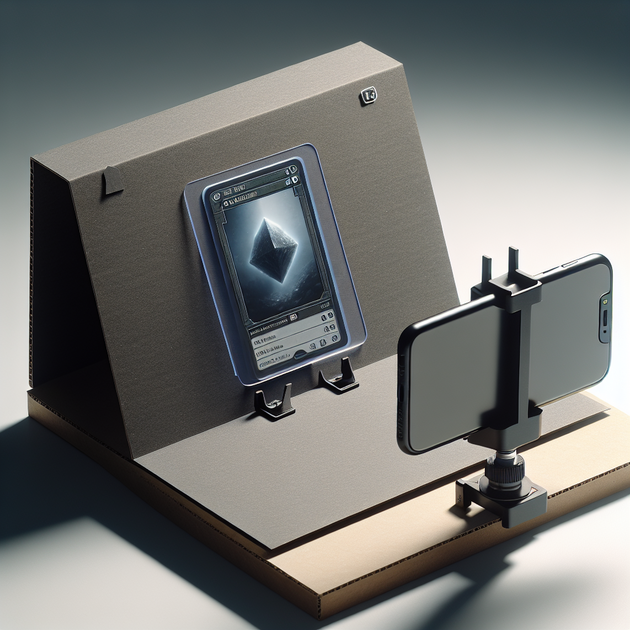Ever wondered why some eBay or Facebook Marketplace listings look so much more appealing than others? The answer often comes down to one thing—consistent trading card photos. If you’re ready to up your selling game with sharp, repeatable card images every time, there’s actually an easy fix that doesn’t require fancy equipment or a professional studio.
Why Consistency Matters in Trading Card Photography
When you’re selling base or basketball trading cards (or any type of collectibles), first impressions really matter. Clear and consistent photos not only look more professional but also build trust with buyers. A cluttered background or crooked angle can distract from the condition of the card—and that’s usually the first thing collectors want to see.
Consistency helps you:
- Showcase the true condition and colors of each card
- Make listings look polished and organized
- Save time when photographing large collections
- Reduce editing or retaking bad shots
- Increase buyer confidence (and possibly prices!)
According to Wirecutter’s guide on selling cards online, clean backgrounds and uniform lighting are two of the top factors in making listings stand out.
A Simple Setup for Perfect Card Photos Every Time
Here’s a straightforward idea inspired by a colleague who wanted to sell his collection efficiently. Instead of fumbling with different angles or uneven lighting each time, he created a stable platform just for his phone camera.
The main features:
- Centered Camera Placement: The plate where cards are placed is designed so the phone’s main camera sits perfectly above it. No guessing if you’ve got the right shot—the framing is always spot-on.
- Fits Multiple Card Sizes: The plate is big enough for both standard base and basketball cards.
- Stable Legs: Weighted legs keep everything steady on most surfaces. No more blurry photos from accidental bumps.
- Consistent Background: A black square of sturdy paperboard sits behind the plate as the backdrop. This gives every photo a uniform look—no random kitchen counters or busy tables sneaking into your shots.
- No Need for Fancy Prints: While some people might consider printing a background, regular black paperboard tends to have a better surface finish than most 3D-printed options. It reduces glare and looks clean in every light.
If you want more ideas on building photo rigs at home, check out this handy guide from CNET on creating a simple smartphone studio.
The Little Details That Make a Big Difference
It’s tempting to just snap quick pics wherever you are—but spending a little extra effort on your setup pays off. Here are some small tweaks that can take your trading card photography from average to gallery-worthy:
- Use Natural Light When Possible: Position your setup near a window during the day for even illumination without harsh shadows.
- Avoid Flash: Phone flashes often create glare on glossy card surfaces. Steady hands and good lighting do wonders instead.
- Clean Your Lens: A quick wipe makes sure dust and fingerprints don’t blur those crisp details.
- Shoot From Directly Above: Lining up your camera perfectly overhead ensures every shot is straight and true-to-size.
- Edit Only If Needed: With everything lined up and well-lit, minimal editing should be required—just crop as needed!
For extra polish, you might want to use apps like Snapseed or Lightroom Mobile (both free) for quick touch-ups if needed.
Anecdote: How This Method Helped My Friend Sell Faster
A friend recently decided it was finally time to part ways with his basketball card collection. He’d tried snapping pictures across his kitchen table before but kept getting weird shadows and backgrounds full of cereal boxes—not exactly eBay gold! After he set up this simple rig with his phone centered over the plate and the black paperboard backdrop in place, he noticed two things immediately:
1. Every picture looked professional—like they were pulled from a catalog.
2. He spent far less time fussing around retaking blurry or off-center shots.
Within two weeks of updating his listings with these new photos, he started getting more questions—and actual sales—than ever before.
Your Turn: Ready to Level Up Your Card Listings?
Getting crisp, consistent trading card photos doesn’t need expensive gear or complicated steps—just a bit of planning and something as simple as paperboard can make all the difference. Whether you’re offloading duplicates or launching an online shop, small improvements can help you stand out from the crowd.
How do you photograph your own collectibles? Got any other tips that have helped boost your sales? Let us know in the comments below!

Leave a Reply